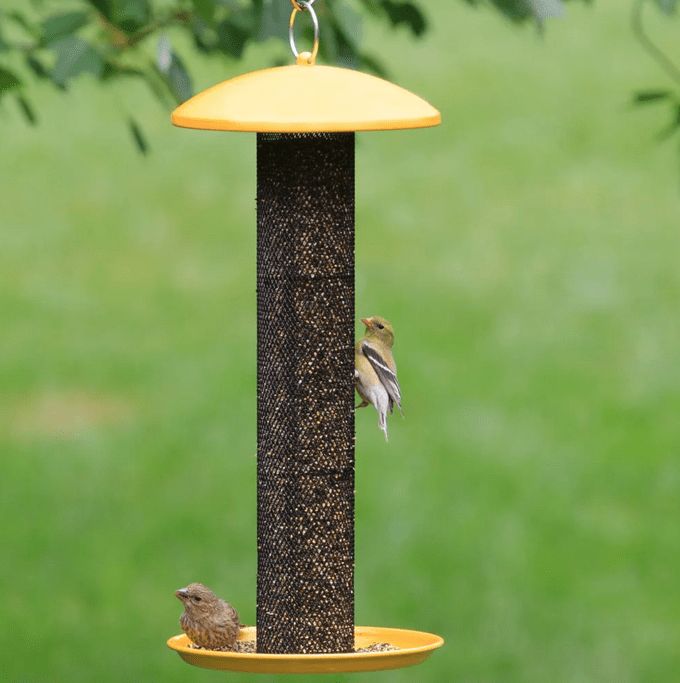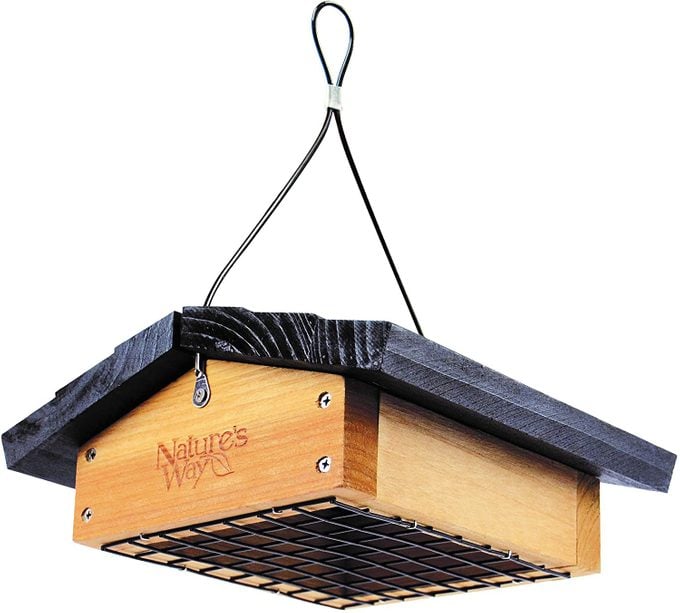How to Get Rid of Blackbirds and Grackles at Feeders
Updated: Aug. 09, 2023
Are bigger birds bothering your songbirds? Learn how to get rid of grackles, blackbirds, starlings and other undesirable birds at your feeders.
Our editors and experts handpick every product we feature. We may earn a commission from your purchases.
For those of us who feed birds, there’s nothing more frustrating than a flock of so-called bully birds descending on our backyard feeders. Not only do they eat the feeders clean in minutes, but their aggressive behavior also can discourage some of our favorite songbirds. That’s why how to get rid of grackles, blackbirds and starlings is one of the most common concerns among many Birds & Blooms readers.
Want more birding and gardening tips? Subscribe to our free daily newsletter.
Reader Georgia Wacker of Canton, Ohio wrote to ask for a solution to keep blackbirds and grackles from pillaging her bird feeders. In Steger, Illinois, Mrs. Joseph Kraus says an invading swarm of house sparrows is eating her out of house and home. And European starlings are ruffling Wayne Taylor’s feathers. These non-native birds are frightening away more desirable species from his Bethlehem, Pennsylvania, yard. Psst—here’s how to get rid of blue jays at your feeders.
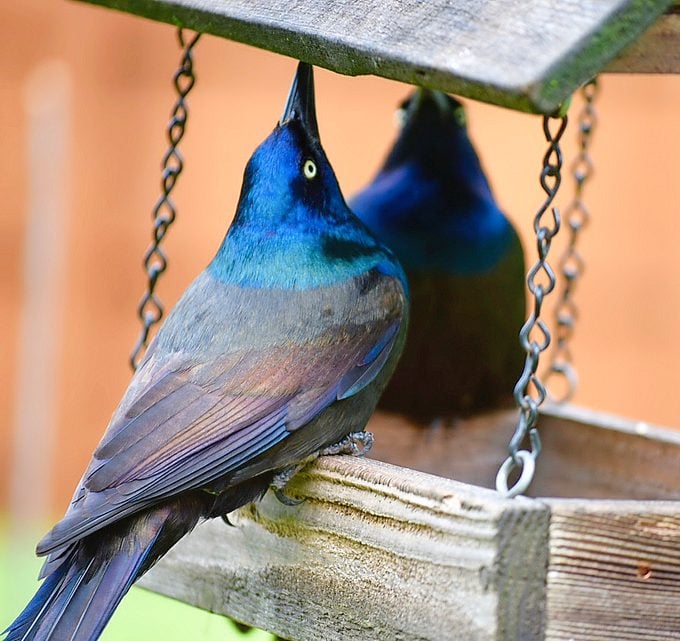
Bully birds include blackbirds, grackles, pigeons, European starlings and house sparrows. The last three are non-native species and are not protected by law. These hungry avian invaders are often attracted to a yard by the cheap wild birdseed mix or suet that’s made available on the ground or in easy-access feeders. If you’re one of the people frustrated by the behavior of bully birds in your backyard, don’t give up the fight.
Here’s what the experts had to say about the problem — and some solutions that will help you get rid of grackles, blackbirds and starlings, so you can continue feeding the birds you love.
Squirrels eating all your seed? Check out our picks for the best squirrel-proof bird feeders and squirrel baffles.
Ask the Experts: How to Get Rid of Grackles
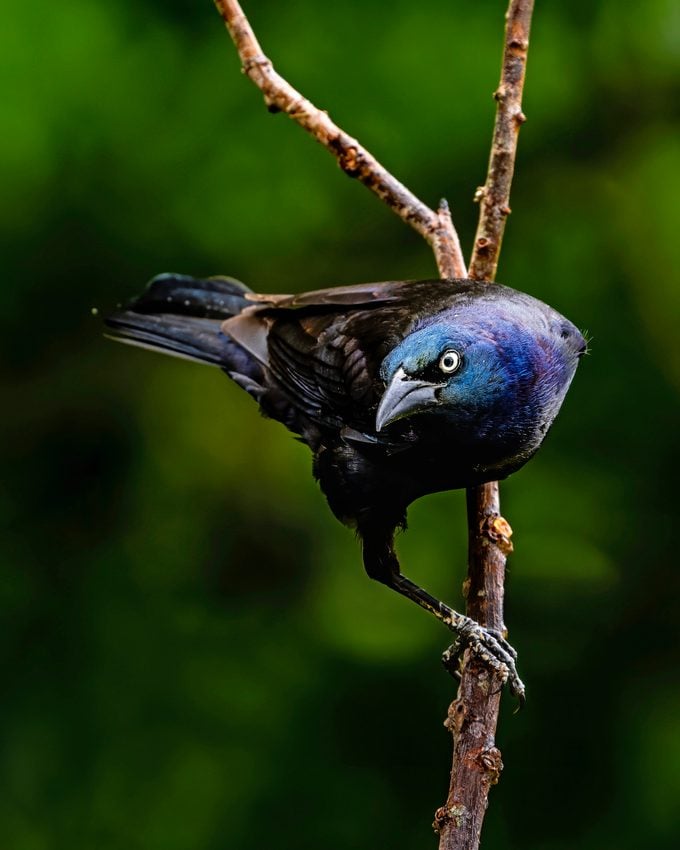
“Common grackles consistently throw birdseed and empty my feeders. How can I deter them?” asks Stefanie Vanderbush of Waupun, Wisconsin.
Birding experts Kenn and Kimberly Kaufman write, “To deal with the big appetites and messy habits of grackles, the best approach is to switch to different styles of feeders. Hanging tube-style feeders with short perches will attract finches and other small birds, but grackles find them hard to use.
A suet feeder that can be accessed only from the underside will work for chickadees, nuthatches and other acrobatic birds, but may discourage grackles. You can also place a wire cage around a feeder—use wire with openings too small for grackles to squeeze through but big enough to let in finches, chickadees, juncos and other small birds.
“What can I do to make grackles share the mealworms with other birds?” asks Nancy Deal of Dover, Pennsylvania.
The Kaufmans write, “Offering mealworms is a great way to entice bluebirds and other insect-eaters that don’t typically visit seed feeders. But mealworms aren’t without challenges—including the fact that many birds consider them a treat. Cage-style feeders are the best way to address this problem. The specific size of the openings in the cage allows smaller birds, such as bluebirds, to get through to the mealworms or other types of food, while preventing access for grackles and larger birds.”
Bird Feeders to Get Rid of Blackbirds and Grackles
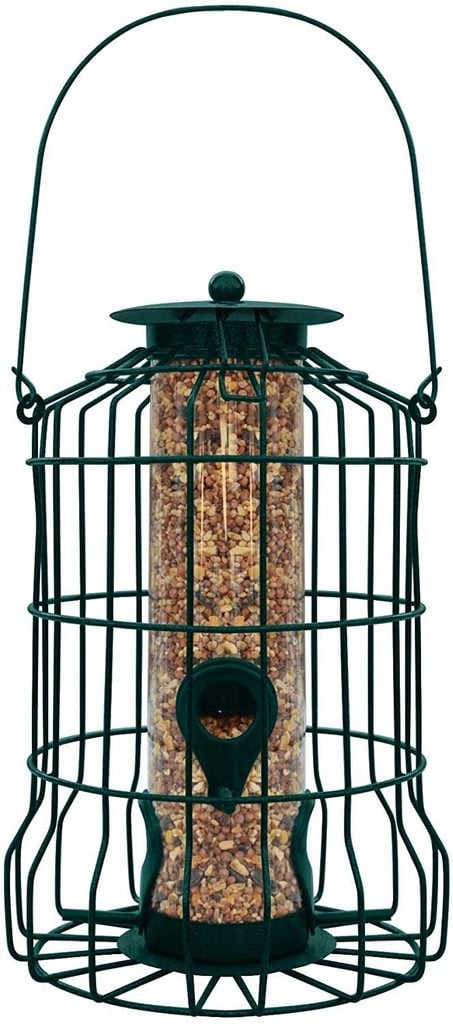
Use Caged Bird Feeders
Because virtually all bully birds are larger than more desirable birds, you can adapt your feeders to accommodate only smaller species. Try enclosing the feeders with large-mesh hardware cloth or chicken wire with openings big enough to allow smaller birds to pass through (a 2-inch opening should do). This will exclude the large birds and help you get rid of the grackles and blackbirds.
You can also purchase caged-in tube feeders or caged fruit/mealworm feeders and tray feeders. Just be sure to get one with the feeder portion located several inches inside the cage, so bullies can’t reach the seed with their long bills.
Want to attract more redbirds? Check out the best cardinal bird feeders and birdseed.
Fill Finch Feeders with Thistle Seed
Generally undesirable, non-native birds prefer bread, corn, millet, wheat and sunflower seeds. To get rid of grackles and blackbirds, supply food they won’t eat. To feed finches, fill hanging tube feeders with only nyjer seed (thistle). For cardinals, chickadees and nuthatches, provide safflower seed in hopper or tray feeders. If you do this, grackles, crows and blackbirds generally will look elsewhere for the foods they like.
Check out more of the best finch feeders to serve thistle seed.
How to Get Rid of Starlings
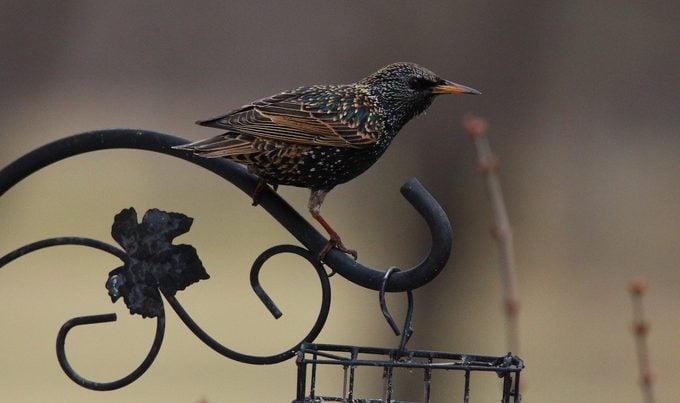
European starlings have a fondness for suet. Get rid of starlings by hanging the suet up and under a domed squirrel baffle. Starlings are reluctant to go underneath any kind of cover and usually will avoid the hard-to-reach meal.
Starling-Proof Suet Feeder
A special starling-proof upside-down suet feeder, in which the suet can be eaten only from underneath, is also a good choice. Acrobatic birds like nuthatches won’t have any issues getting to the food.
Check out natural ways to keep bees and wasps away from hummingbird feeders.
Keep the Feeding Area Clean to Deter Grackles and Blackbirds
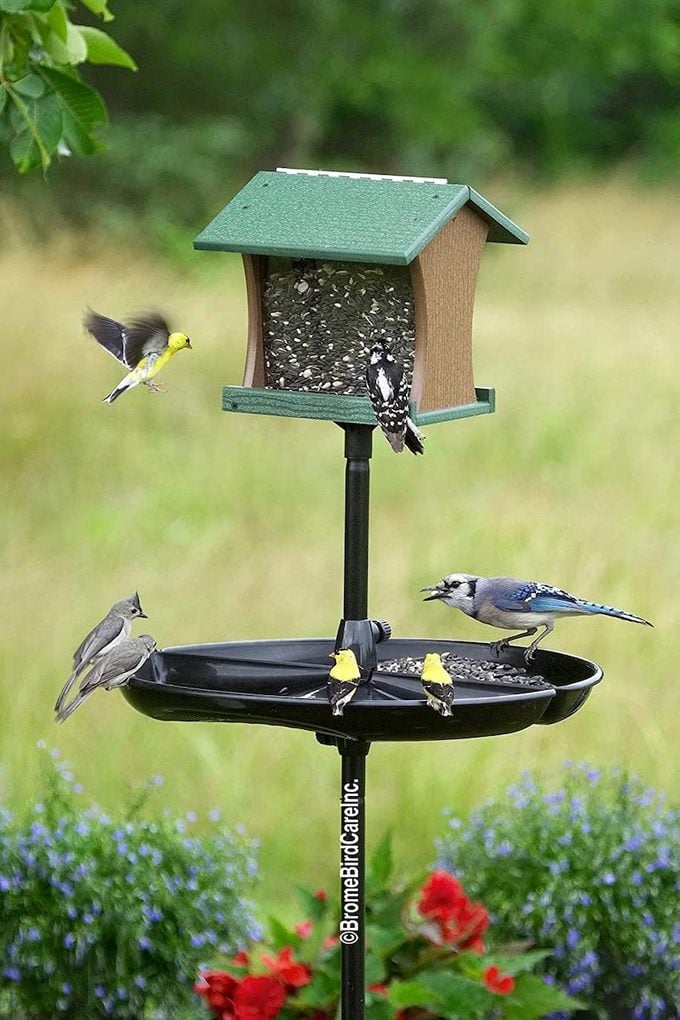
Seed Catcher Tray
Some backyard birders have the greatest problems with bully birds that eat the cast-off seeds below hanging and post feeders. Pigeons are notorious for gathering in flocks underneath feeders for their meals.
The solution for this problem is to collect the fallen seeds in a deep container, such as a plastic garbage can or pail, that the pest birds cannot or will not get into. You can make a hole in the center of the container and place it right on your feeder pole. You can also try using a seed hoop or seed catcher tray to contain the mess.
Psst—learn how to clean your bird feeders.

